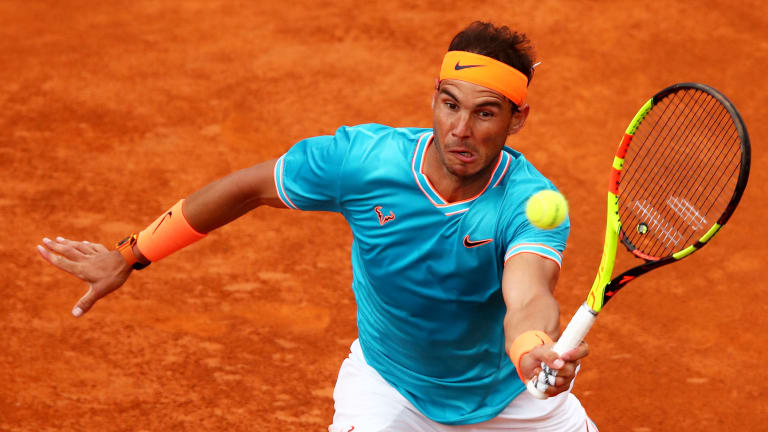Rome, Italy
How Rafael Nadal turned the tables on Stefanos Tsitsipas in Rome
By May 18, 2019Rome, Italy
Carlos Alcaraz jumps Novak Djokovic, returns to No. 1 in ATP rankings; Daniil Medvedev to No. 2
By May 22, 2023Rome, Italy
Daniil Medvedev finally proved to himself that his hard-court game can work just as well on clay
By May 21, 2023Rome, Italy
Daniil Medvedev makes his mark on clay by beating Holger Rune for Italian Open title
By May 21, 2023Rome, Italy
Daniil Medvedev wins 20th ATP title—but first on clay—in Rome with victory over Holger Rune
By May 21, 2023Rome, Italy
Italian Open organizers promise a retractable roof by 2026
By May 21, 2023Rome, Italy
Rome Men's Final Preview: Daniil Medvedev vs. Holger Rune
By May 21, 2023Rome, Italy
With Rome win, tranquil Elena Rybakina now holds big titles on all three surfaces
By May 21, 2023Rome, Italy
Elena Rybakina clinches Rome crown when Anhelina Kalinina stops with left leg injury
By May 20, 2023Rome, Italy
Holger Rune storms back to reach Rome final, scores first win in five clashes with Casper Ruud
By May 20, 2023Rome, Italy
How Rafael Nadal turned the tables on Stefanos Tsitsipas in Rome
This Spaniard, the one who showed up today, and who we hadn’t seen much of this clay season, is going to be hard to beat.
Published May 18, 2019
Advertising

How Rafael Nadal turned the tables on Stefanos Tsitsipas in Rome
© Getty Images
Advertising

How Rafael Nadal turned the tables on Stefanos Tsitsipas in Rome